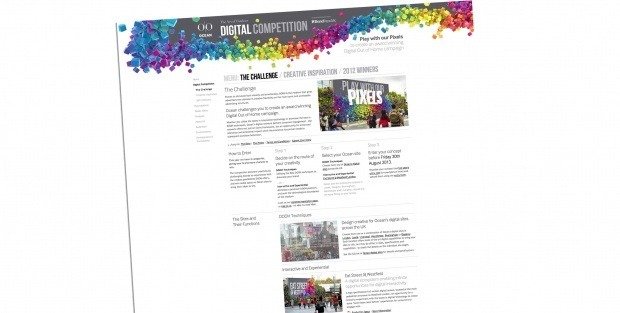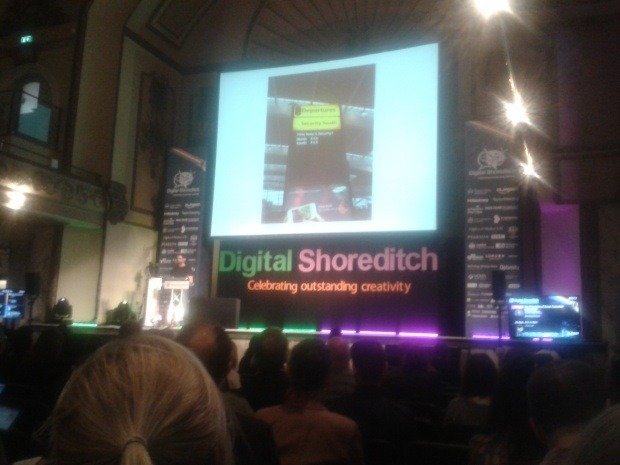For the past two years the University College London (UCL) and the University of Nottingham (UoN) have been working together on a project called Screens in the Wild. Researchers from the UCL’s Space Group and the UoN’s Mixed Reality Lab investigated how media screens located in urban space can be designed to benefit public life.
The research team includes architects, human computer interaction designers, computer scientists, anthropologists, developers, artists and curators. Notably, it doesn’t include anyone currently working in DOOH. The reason for this is simple; they wanted to have total independence in order to be able to invite companies to try their test platforms in the second phase of the project, which began recently.
Ava Fatah gen Schieck, lecturer at UCL and head of the project, explains: “We built a series of architectural interfaces in Leytonstone, east London and Nottingham which use broadcast media and interactive technologies to foster community participation and ownership of the urban space.”
A total of four screens have been installed: two are in Nottingham, at the New Art Exchange and the independent Broadway Cinema, while the other two are in East London, one at Leytonstone library and another at volunteer-run community centre The Mill. The displays run as a network and, from the moment the first screen went up, the project has been running 24 hours a day. Each of the four nodes contains a touchscreen, a CCTV camera and a webcam, a microphone and a speaker.
Dr Holger Schnadelbach, the principal investigator and senior research fellow at UoN, was in charge of creating the technical platform for the project. The displays, which are NEC MultiSync screens, run on a Windows 7 platform using a Union Server and a touch foil overlay from Visual Planet.
“We tried various technologies, such as an Xbox for gesture interaction, but they didn’t work,” says Schieck. “We wanted to bring interactivity into the public realm and a simple touchscreen was the best.”
The research results show that slight distinctions in a screen’s surrounding area can provide remarkably varied results. Nottingham’s Broadway cinema is situated a few metres back from the street; here, people tend to stay and interact with the screens for extended periods, or just sit around and passively watch others play. In east London, where the screen is on the high street itself, the dwell time is briefer.
The project’s aim is to invite people to get more involved with their local community. With this in mind, researchers invited local digital artists and residents to workshops and events in which participants generated their own relevant content.
“A key element for engaging the public, besides creating simple interaction mechanisms, is to focus on locally generated content and to collaborate with communities to generate and develop the content,” believes Schieck.
One of the most popular interactions is a photo booth application, where pictures can be shared between the four locations, while another – a game – saw a high level of participation from children.
“Depending on the time of day you can get a very different picture of the interaction taking place,” explains Schieck. “For instance, inhibitions seem to disappear in the evening.
“There is an interesting case with the community centre screen where, for the past two years, a man has visited the screen every other day and had his photo taken. The picture only shows a snapshot of the interaction, but through our CCTV camera observation we can see that what he does is a whole performance: he dances in front of the screen!”
The research and development phase has ended; however, the screen network with its scheduled experiences continues to run and is available for any interested party to run tests on. Local venue owners and the residents involved in the project have expressed their continued interest in supporting the project.
“We have developed knowledge of what works and what doesn’t work, knowledge of the urban setting and the types of community around the screen locations, ” concludes Schieck. “We would like to test the possibility of offering the screen locations as a research test bed for developing novel ideas and supporting new ways of engagement with the public, which might be of interest to media owners and advertising agencies.”
The DOOH industry has a gap to bridge between academic research and the practical application of screens in the urban landscape. The Screens in the Wild network could be an ideal platform for identifying useful information about specific locations and engagement levels. This controlled environment can provide an outline of the social and technical challenges and opportunities for further developing out-of-home advertising and permit the transfer of this knowledge to other networks.





